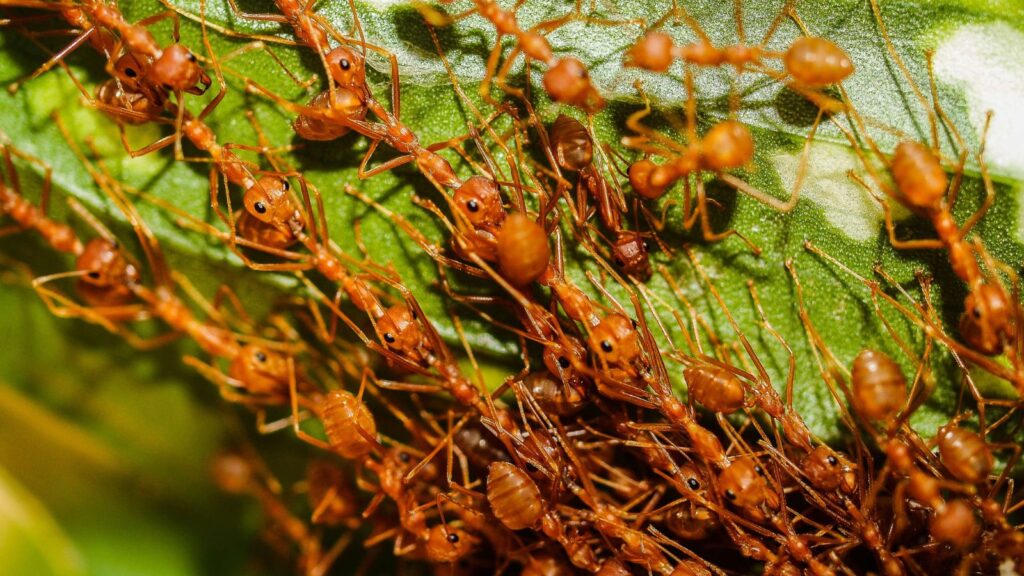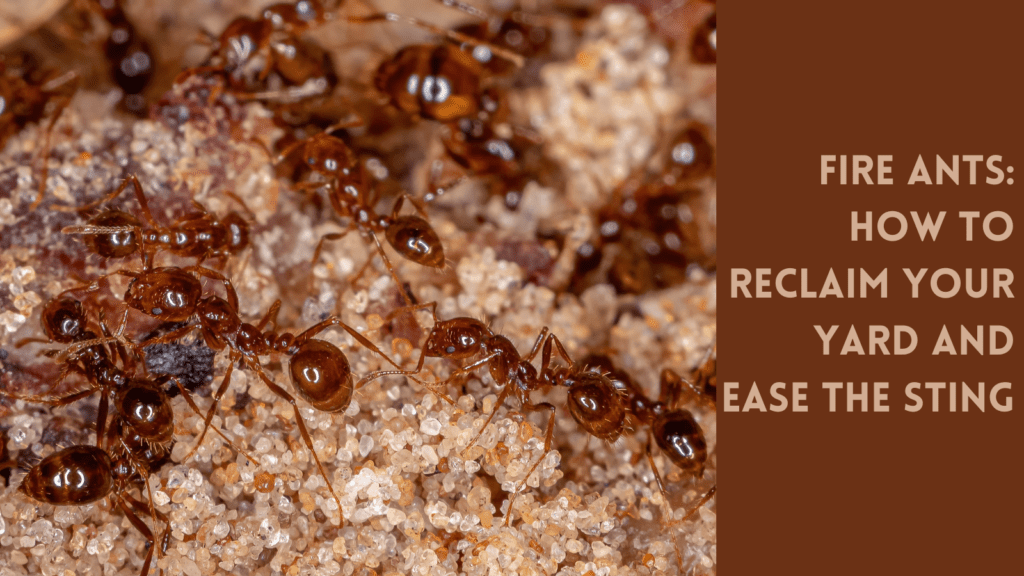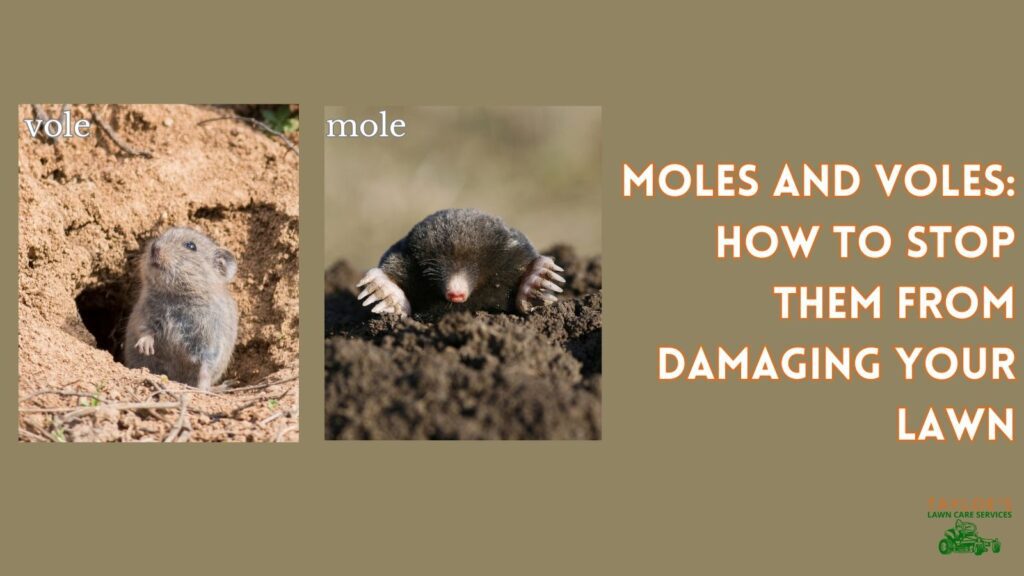Last Updated on: 3rd December 2023, 02:45 pm
Learn why you might attract fire ants.
Why are you attracting fire ants? These insects pose a significant challenge in many backyards. They are pests and build mounds that can take over large areas. Not to mention, their bites have a terrible sting on humans, pets, and livestock.
These pests, specifically the invasive Solenopsis invicta species, are a significant concern for homeowners in North Carolina. Their aggressive nature and painful stings make them unwelcome guests in any yard.
Tayloe’s Lawn Care Services holds the necessary North Carolina state certification for lawn and garden pests in Bertie and Hertford Counties, NC. This post will look further into the factors that attract these biting insects to yards and effective strategies for their management.
Eight Key Factors Attracting Fire Ants to Yards
Here are the main things that attract these common lawn pests:
1 – Moisture and humidity:
Fire ants thrive in moist conditions. They often migrate towards irrigated lawns or areas with drainage problems. Research from the Texas A&M AgriLife Extension highlights how fire ants build mounds in response to changes in soil moisture (Texas A&M AgriLife Extension).
2 – Temperature and sunlight preferences:
These ants prefer warm, sunny environments. The University of Arkansas Division of Agriculture describes how fire ant mounds are more prevalent in open, sunny spaces, making manicured lawns a preferred site (UArk Agriculture).
3 – Food availability attracts fire ants:
They are omnivorous, feeding on proteins and carbohydrates. They prey on insects and small animals and also consume plant nectar. The Clemson University Cooperative Extension Service provides an in-depth look at the diet of fire ants and its impact on local ecosystems (Clemson Cooperative Extension).
4 – Soil composition and landscaping:
The nesting habits of fire ants are influenced by soil type. Sandy and loamy soils are ideal for mound building. The University of California’s Statewide Integrated Pest Management Program explains how landscaping choices can impact fire ant nesting patterns (UC IPM).
5 – Landscape disturbances:
These insects are often attracted to areas where the soil has been disturbed, such as during landscaping, construction, or after heavy rains. These disturbances can create ideal conditions for them to establish new colonies. Research from the University of Georgia Extension explains how soil disturbances can inadvertently encourage fire ant infestations (UGA Extension).
6 – Organic debris and mulch:
Organic materials like wood chips, leaf piles, and compost bins can attract fire ants, as they provide both a food source and a nesting habitat. The Alabama Cooperative Extension System highlights the role of organic debris in providing an ideal environment for fire ant colonies (Alabama Cooperative Extension).
7 – Lawn health and grass type:
The health and type of grass in your lawn can also attract an infestation. Weaker lawns with sparse grass coverage offer less resistance to mound building. Conversely, certain dense grass types may be less appealing to these pests. The Mississippi State University Extension Service discusses the relationship between lawn health, grass types, and fire ant activity (MSU Extension).
8 – Presence of aphids and other insects:
They are attracted to aphids, scale insects, and other garden pests due to the honeydew they produce. A yard with a high population of these pests can be more susceptible to insect infestations. The University of Tennessee Institute of Agriculture gives insights into how managing these insect pests can indirectly reduce fire ant attraction (UT Institute of Agriculture).
Strategies for Fire Ant Management
What do you do if your yard is attracts fire ants? While these biting bugs are notoriously invasive, you do have four primary methods of coping with them:
1 – Integrated pest management (IPM):
An IPM approach, as the Environmental Protection Agency recommends, combines biological, cultural, physical, and chemical tools to minimize economic, health, and environmental risks (EPA).
2 – Chemical control of fire ants:
The use of baits and contact insecticides can be effective for fire ant control. The North Carolina Cooperative Extension Service offers guidance on the safe and effective use of insecticides to manage fire ant populations (NCCES).
3 – Best lawn care practices:
Maintaining a healthy, well-groomed lawn can deter insect colonization. These good practices include regular mowing at a taller height, aeration, and ensuring proper drainage to reduce soil moisture levels.
4 – Professional intervention is the most effective fire ant treatment:
In cases of severe infestation, professional pest control services may be necessary. Tayloe’s Lawn Care Services provides expert assessment and tailored solutions for lawn and ornamental grass management in residential and on-agricultural commercial lawns. As North Carolina state law requires, we are certified in lawn and ornamental grass mitigation practices.
The Takeaway: Is Your Yard Attracting Fire Ants? We can help!
Specific environmental conditions such as moisture, food sources, and suitable nesting grounds attract pests to yards. Understanding these factors is critical in implementing effective control strategies. Homeowners in Aulander, Merry Hill, Lewiston-Woodville, Colerain, Powellsville, Windsor, Ahoskie, Union, Millennium, St. Johns, and Murfreesboro can rely on Tayloe’s Lawn Care Services for expert guidance and solutions if your yard is attracting fire ants.
To get rid of unwanted and uninvited insects or other personalized lawn care services, contact Tayloe’s Lawn Care Services at 252.287.3376.
Author Profile

- Randy Tayloe is the COO of Tayloe's Lawn Care Service, LLC. He is a certified custom applicator, recognized by the North Carolina Department of Agriculture Pesticide Division. A native of Bertie County, NC, and graduate of Bertie High School, he wants to beautify his home county - one yard at a time.
Latest entries
 GardeningApril 1, 2025Fountain grasses add colorful foliage and movement
GardeningApril 1, 2025Fountain grasses add colorful foliage and movement GardeningMarch 21, 2025White cloud muhly grass growing guide
GardeningMarch 21, 2025White cloud muhly grass growing guide Lawn CareFebruary 25, 2025Should I mow every week?
Lawn CareFebruary 25, 2025Should I mow every week? Lawn CareFebruary 18, 202515 Simple early spring lawn care tips
Lawn CareFebruary 18, 202515 Simple early spring lawn care tips







